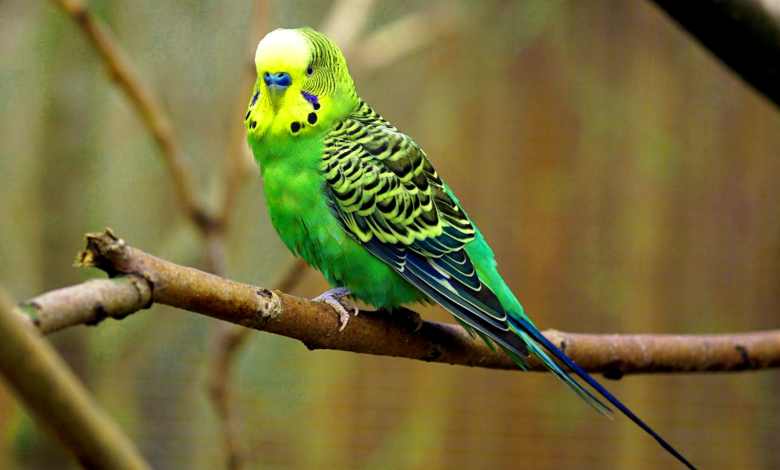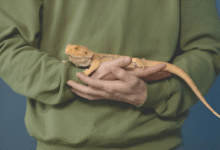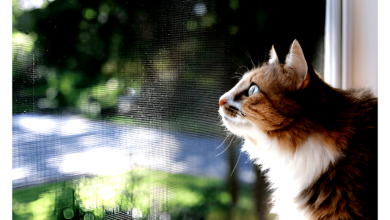
Tips For Parakeet Care and Bonding
Parakeets have the potential to be wonderful pets that form a strong link with the members of their human flock. Even while the term “parakeet” may be used to refer to a wide variety of tiny parrots, the budgerigar, often known as the budgie (Melopsittacus undulatus), is the most popular kind of parakeet kept as a pet.
Tips For Parakeet Care and Bonding
Although they are native to Australia, these colorful parakeets with long tails and slender bodies have been cultivated in captivity since the 1850s as a result of their popularity. They are now the most popular pet bird in the world, and the care that is provided for parakeets has been perfected to guarantee that these birds enjoy lives that are both healthy and joyful.
Read More : Futuristic Pet Nutrition: The Cutting Edge of 2024
Having a better understanding of budgies may assist you in determining whether or not a parakeet would be a suitable pet for you and your family flock.
Why Parakeets Make Good Pets
From the top of the head to the tip of their long tails, which taper to a point, these very little birds reach just ten to twelve inches in length. This indicates that a parakeet may be completely content in a smaller area, and that they do not need as much intensive care as bigger pet birds, such as macaws, would require the same amount of attention.
The parakeet is a bird that is readily tamed, which makes it a sociable and engaging bird that enjoys playing. Although they are able to be noisy, the chittering, chattering, and whistling that they do is not often unduly disturbing. A budgie will only become uncomfortably loud when they are experiencing negative emotions such as stress or anxiety.
In general, a parakeet has a lifespan of five to eight years, but it has the potential to reach fifteen years if it is in extraordinarily excellent condition and is well cared for. There is no need for many people who own pets to be concerned about the possibility of outliving a bird and having to make arrangements for their care with other members of the family since this lifetime is optimal.
Parakeet Habitats
It is recommended that a parakeet be housed in a cage that is at least 18 inches deep, 18 inches long, and 24 inches wide. However, a bigger cage will provide the bird with more comfort and will also promote its happiness.
In an ideal situation, a pet parakeet should have a habitat that is as vast as the space that is available or the owner’s financial means will allow. However, if their cage has sufficient room for them to spin around, expand their wings, and soar from side to side, these tiny birds may be able to have a pleasant environment.
Due to the fact that parakeets are energetic climbers and would gladly explore their environment, horizontal bars are the ideal home for these birds. There should be no more than a half inch of space between the bars; otherwise, the bird could get trapped or attempt to flee.
In order to ensure that doors are firmly locked, clip latches should be used. This is because parakeets are intelligent enough to figure out basic latches and gates in order to make a stealthy escape.
Considering that parakeets have a tendency to choose taller perches, the habitat need to have a number of perches that are of varying heights. In order to offer these busy birds with perches and a delightful climbing experience, ladders that are slanted against the edges of the cage will suffice.
Parakeet Diets
Although parakeets are seed-eating birds, a pet parrot may benefit from a diversified diet in order to get the appropriate amount of nourishment. It is best to use pellets that are designed specifically for little birds, and adding millet sprays or seed mixtures as a reward will provide them with a greater choice of options.
Additionally, very little quantities of fruits, vegetables, and nuts that have been finely chopped are wonderful additions to the diet of a budgie, and the bird should always have access to clean, fresh water. Be careful not to overfeed your pet parakeet care. Because of their tiny size, these birds do not need large meals, and food that is left uneaten may soon go bad and cause sickness. Obesity is a potential issue with parakeets, particularly if the bird is overfed and does not get sufficient physical activity.
Bonding And Playing With Your Parakeet
Toys, fun, and training are all key components of appropriate parakeet care and exercise, which will assist you in developing a personal connection with your pet. Although these birds like interacting with others, they may be timid and cautious at times, particularly when they are young.
When dealing with a parakeet, it is essential to exercise patience and gentleness. As the bird eventually becomes acclimated to you and learns to trust you, it will be able to engage in even more engagement with you. You may get your parakeet started on the path to socializing by talking, whistling, and singing with it.
Additionally, utilizing treats as a form of motivator can assist parakeets in learning new behaviors. As they are quick learners, these birds will quickly learn how to step up and down in the near future.
Among the more sophisticated skills that may be taught to a parakeet, some examples include training it to roll over, wave, play dead, retrieve, or even do entertaining activities such as riding on small skateboards or dancing. These tricks are comparable to those that might be taught to a dog.
Daily training sessions can help deepen the link that you have with your parakeet; nevertheless, it is important to limit the length of each session to no more than ten to fifteen minutes in order to minimize tension and boredom.
To attain the greatest possible outcomes in terms of training and to establish the strongest possible relationship, it is important to spread out the sessions throughout the day. At times when you are not there, your parakeet care will need toys in order to keep itself entertained. Toys with moving elements, such as spinners, bells, or balls, are particularly appealing to parakeets because of their bright colors.
These beautiful birds like playing with colorful toys. There are also different types of toys available, like as swings and ladders, and tiered play centers are ideal for climbing on and searching through. The bird should be stimulated with different activities on a regular basis by rotating toys in and out of the cage. This will result in more exciting play for the bird.
Is Your Parakeet Happy And Healthy
At the end of the day, providing your parakeet with excellent, careful care will help to keep it happy and healthy. The bird should be busy and vocal, but not unduly frantic or loud. Additionally, it should be sensitive to your presence and interactions with it. Both the bird’s diet and its preening habits should be healthy.
Read More : 8 Tips to Keep Pets Safe During this Winter
The feathers of the parakeet care should be in excellent condition, and there should not be any evident indicators of bad health, such as bald patches, crusty eyes, or nasal discharge. If any of these signs are seen, it is imperative to seek the diagnosis and treatment of an avian veterinarian as soon as possible.
It is possible to take pleasure in having a budgie as a pet bird, and if you provide it with the appropriate care, these lovely and sociable birds can rapidly win your heart as you form a connection with them and start to take pleasure in being a part of each other’s flock.







